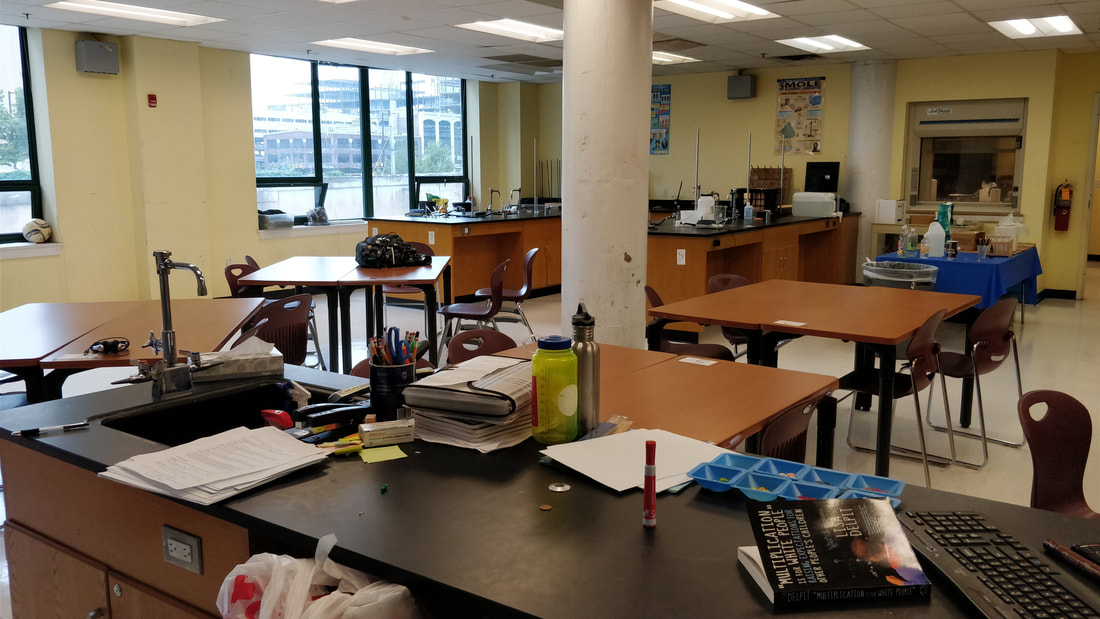- Blog
-
THESIS
- MISSION: Learning science by doing science.
- ARGUMENTATION: The missing piece to inquiry.
- IMPLEMENTATION: Teaching students to think like scientists
- FINDINGS: Student growth and response to argumentation frameworks
- REFLECTION: Co-generative thoughts for future practice
- ARTIFACTS: Data from the field and the study
- Portfolio
- About
How should a classroom be built? - An inquiry on the physical design of learning environments9/17/2017 What makes a great classroom? Engaging activities, and positive relationships, certainly—but in building an effective and authentic learning environment, it’s also important to consider the physicality of the environment itself. Objects and arrangements can’t be ignored. Beyond their obvious functions, they also reveal teacher philosophies and attitudes towards what is important in teaching and learning. A couch or a rug can demonstrate warmth: an intention by the teacher to bring comfort to an otherwise cold, hard linoleum floor. A circle of desks can promote values of collaboration and teamwork, whereas rows confer hierarchy. These messages, however implicit, directly affect students. A design can tell students that they belong, and that their voices matter—or that they must fall in line, without room for negotiation. Thus, in this first inquiry, I investigate the physical design of my classroom not just as an aspect of learning, but as an essential foundation for learning. First, seating. The specific arrangement of students reflects the nature of activity to be done. Whole-group discussion and socratic seminars, for example, get a circular formation. Station and small-group activities go into clusters and pods. Presentations and demonstrations require more forward-facing formations. Is one arrangement superior to all others? Probably not, though I’m inclined to say that unbroken rows would be a major hindrance in most classrooms. Throughout my observations, I hope to develop a practical and functional seat arrangement for both student-centered learning, and for direct instruction as needed. Here’s where I fulfill my student teaching. Note the desk arrangements. Here, students sit at large tables, typically in groups of four. Desks are also angled so as to balance direct instruction and group discussion: students aren’t made to directly face the teacher, nor do they ever have their backs to the board. This flexibility allows me to easily assign an activity, and then for students to dive into collaboration. All without moving any desks! In consideration of time management and short passing periods, flexible seat arrangements are a huge plus. Furthermore, given our emphasis on inquiry-based learning, this arrangement seems especially appropriate.
Another aspect, which I’ve seen in many other classrooms at SLA: softness. I was surprised to walk into a neighboring classroom one day to see students engaged in a lesson atop a couch! There were also colorful rugs, pillows, and plants. These in no way distracted the students from learning, and may have even aided them. Weinstein and Novodvorsky call this a provision of psychological security, through which kids can feel that “this is a good, comfortable place to be” (Weinstein 28). Once this security is established, and students feel a sense of belonging, then they are motivated to participate and to reach meaningful learning goals. In a science class, this can be more difficult to achieve. The room is typically filled with hard lab benches, dangerous chemicals, and fragile glassware. Here, the incorporation of softness may be even more important—especially when science education is known to be so intimidating for adolescents! This isn’t to say that students should be doing experiments atop flammable sofas and bean bags. Rather, I envision an ancillary “research corner” or “bio zone,” where kids can comfortably choose to sit amongst books, artwork, drawing space, plants, or even a class pet. I introduce items that I myself find interesting—things I can share with my students, to establish a deeper connection—and I also allow my students to cooperate in building this space, to make it a foundational part of our class ecosystem. In my mentor’s classroom at SLA, there are a several of the above items, but not necessarily a dedicated comfort space or research area. Moving forward, I hope to investigate how I may build such spaces.
2 Comments
|
AuthorHi! I'm a bio/chem teacher and M.S.Ed. student at the University of Pennsylvania. Archives
April 2018
Categories |
Proudly powered by Weebly

